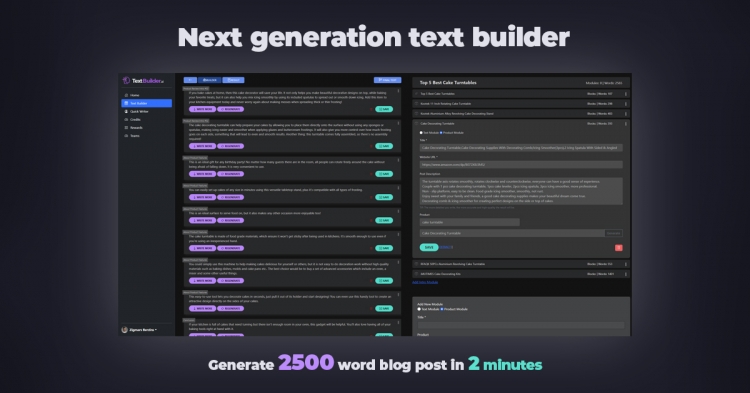Review of long-form content outlining and writing tools and actual GPT-3 pricing for various models:
Mechanized SEO, AI-aided writing, and outline summarising are all coming together. Nothing can stop that train.
1. Frase
2. WriterZen
3. PostPace
4. Blogely
5. Outranking
6. Instoried
7. Google Doc + Add-ons
8. Bonus - Separate the outlining, writing, editing, SEO, and tracking process with different products.
Common problems:
A. UX / User Experience - None of them have figured out their user experience well enough; Frase and WriterZen are the closest to solving it; while Frase focuses on writing, WriterZen, ironically, focuses more on ranking. Rest are terrible in their user experience, but for their reasons.
B. UI / User Interface - Instoried and WriterZen have the best user interface for their purposes; the rest are terrible.
C. Product Management - Almost everyone is confused about their user persona goals, which is the easiest way to spot bad product management practices; this is also where one can separate the wheat from the chaff, where again, Frase and WriterZen are the only ones that shine, clearly because of their team's experience and ownership in the product management space. Instoried can get there, but they will need help and need to scale their team quickly or lose steam. Rest have too much to catch up on and therefore should clearly work towards a scientific method to product management and not random ideas jumbled up together.
Common solutions:
1. Everyone can read H1 / H2 / H3 / H4 / Hn tags - This is a feature, not a product, definitely not a moat
2. Everyone will have GPT-3 access, all of whom will have the same pricing from OpenAI - This is a feature, not a product, definitely not a moat
3. More and more AI-based NLP writing APIs will come up; they will keep improving every half a year - This is a feature, not a product, definitely not a moat
4. Lowest volume AI pricing for monthly unlimited words will happen, and it will matter. Why? - This is a feature, not a product, definitely not a moat - Therefore, the lowest cost wins. However, this can lead to a moat because higher data processing will lead to more proprietary data for the product, which can be used to better the product significantly over time.
5. Several users - The product with a higher number of users per special subscription price will win. As we can see, this is where the market is heading. Why? More users, more usage, more standardized learning, lower learning curve, higher, better, faster output per writer, and way more importantly - more proprietary owned data for the product to improvise, personalize, optimize on.
Reviews:
Frase
Suitable for small teams writing articles whose SEO is done outside the product.They are going in the right direction, but they have vastly underestimated the competition. Also, they don't exactly know their user segments well enough, but they are trying. Their content editor is good, and their AI pricing is OK; however, their team limits will ensure that they don't get to win the market. They should win the user volume market and raise $10 million-plus in funding. They can do it. They have the highest long-term chance of success if they don't sell out, and their work on quickly extending their user limits in terms of team sizes.
WriterZen
Good for SEO researching curated towards writing.Exceptionally well-thought product from the mind of a content creator himself; therefore, the product shines for a self-owned small agency use case. Still, it's not giving a scaled experience, and therefore, a team of people can't come in and use the product together; this is fine from the point of view of the single person freelancer but is terrible for all agency owners or even large B2B or larger B2C teams. Therefore, who is the scaled user who will pay for this product? Also, unless they scale, someone like Frase with better SEO features can take WriterZen's market away. However, currently, WriterZen is a content ranker's dream, with a few minor improvements. I wish they solved the product from the point of a scaled team. The problem is that this product doesn't seem to be made for venture funding and that this space might hinder its growth significantly.
PostPace
Suitable for writing content fast that doesn't necessarily need to rank.A product true to its name is the fastest way to create written content if you write everything yourself, without AI. Still, it is a single-person endeavor that needs more product management and technical strength in terms of feature building and just plain user experience and user interface flow. The product has a lot of embellishments that need to be ironed out, and they had enough time to do it, which means it's either a money problem or a team size problem, or both. It is tough to solve given their current pace of things, but the founder will try earnestly.
Blogely
Good for 2019. It was a decent product when the person thought about it. Extremely poorly thought out limits that hinder product growth.Much poorer distant third cousin of PostPace thought it could make hay while the sun shone and didn't realize how fast the sun would stop shining on them. This is the most constricted writing product in the market by far where they thought the limits would entice enough users; however, the problem with this space is the fact that the space has moved very fast, and anybody who doesn't have enough active users in this space will end up with a worse off the product with time and progressively running out of steam.
Outranking
A good idea was poorly executed. It can be mildly helpful to folks who are just starting in blogging, not necessarily content writing, where the blog's only aim is to churn fast content without thinking of further consequences.Also, a case of founders assuming very wrong things about the market, where they thought/think they can always progressively solve problems. Bait and switch don't work in such new fast, moving, unstable third-party API-based markets. Their user experience is highly cluttered. The only problem they were trying to solve was how to show too much information on the screen without thinking of the implications of doing so on the user flow. Also terrible limits on their AI writer, which renders this product useless without their non-unlimited $59 monthly plan, which is highly deprecated. Unfortunately, they have lost a significant opportunity to become one of the most prominent players in the game by thinking they can save a few bucks on GPT-3. In the short term, this will look genius, but in the longer term, this is an idiotic move where they will seed their advantage to other players who figure out their limits right. Let me reiterate that their limits make no sense whatsoever, regardless of whatever.
Instoried
Content tonality as the base. Decent for short blog writers writing for newspapers and magazines only.An exciting direction for a product that will be very useful for a lot of content writers in the future, but it is also extremely limited in its thought of what it can become. Also, it will end up directly competing with Grammarly sooner or later if they don't realize this beforehand. They have a weird word limit of 1800 words, whereas most good blogs today run into the 3500-5000+ words category efficiently, while stories are easily 10000+ words. They are also very clearly confused about their user segments, user needs, and, therefore, user features that they should develop. What they must very quickly understand is market sizing for writers of various kinds and, therefore, which ones are they going to focus on, which leads to a straightforward statement - not all users are your customers, so figure out who your customer is, and work backward, but ensure that customer segment is voluminous and value accruing enough.
Google Doc + Add-Ons
I have a feeling that a few very focused add-ons on Google Docs might not be a terrible idea if they can be combined to do a better job than what is out there right now, probably also while managing a much lower cost of the product which also giving much better limits, because of inherent cost advantages available with such a model. We will wait and watch.Conclusion
Using separate tools for individual use cases: Something that I weirdly realized is that the best outcome with the highest value with the lowest cost is coming out using multiple tools, which can either be a short form or long-form content in mind, just mixing and matching depending on the user requirements where all such tools like Copy.AI, Nichesss, PepperType, Rytr, etc. can just be combined along with some SEO tools to give a much better outcome, I mean are we thinking reading HTML tags for a living is a product that people will pay for? Where is the context that builds the value? Most writers are just focused on getting the tags without understanding what those tags do and if the content below the tags even makes sense. So to cut a long story short, perhaps separating the different parts of the writing process leads to a better outcome because that is anyway what many of these long-form writers are doing themselves at the backend. Unfortunately, that process is nowhere close to being either smooth or transformational, and this is the opportunity for long-form content writers.Summarised thoughts:
What all the players in the market have weirdly not realized is that none of them have a significant advantage over the other since their base product is instantly copyable along with pricing limits and structure, which is going to only increase with the higher proliferation of GPT-3 / GPT-N and many other increasingly better AI-based NLP models; therefore the only natural moat will become
I) Proprietary data
II) Owned machine learning models
III) Non-third party AI-based functionalities explicitly built for the product
IV) UX / User experience for the focused segmented customer base
V) UI / User interface that helps people write better, faster, more optimized
VI) Outcome orientation focuses on user benefits and not random feature stacking
VII) Build with teams in focus, not individuals, unless these products are meant to work for ten or more team members while also ensuring single user benefits from day 0; by default, none of them will accrue the benefits to build a scalable product. They will go to a market that doesn't have the strength and vitality to sustain the product.
VIII) Remember, all of this has to lead to content outcomes, which in most cases will be ranking the content, and to my current understanding, very few of these products have that outcome in mind. Therefore the products that push users to monthly pricing plans without solving for this outcome will lose very fast because solving for this is not an easy thing to do at all.
Writing this was fun. I hope people read and try to make things better for their users and themselves. Thank you, folks.
OpenAI GPT-3 pricing details so that you know what you must -
https://beta.openai.com/pricing
GPT-3
Most sophisticated output model = $ 1 = 12500 words = 16625 tokens = 58750 alphanumeric characters + free spaces
Fastest output model = $ 1 = 937500 words = 1246875 tokens = 4402650 alphanumeric characters + free spaces




